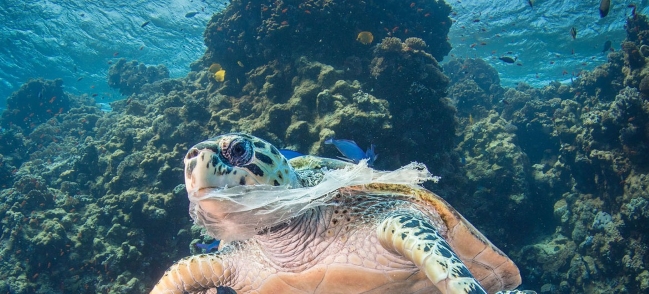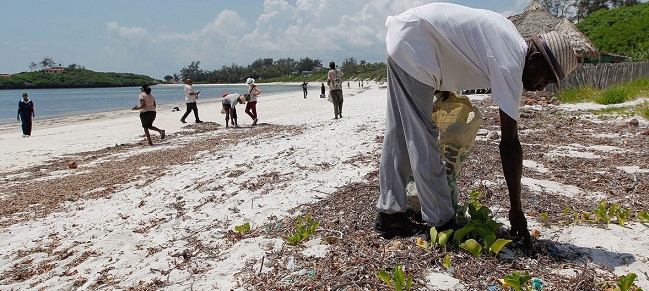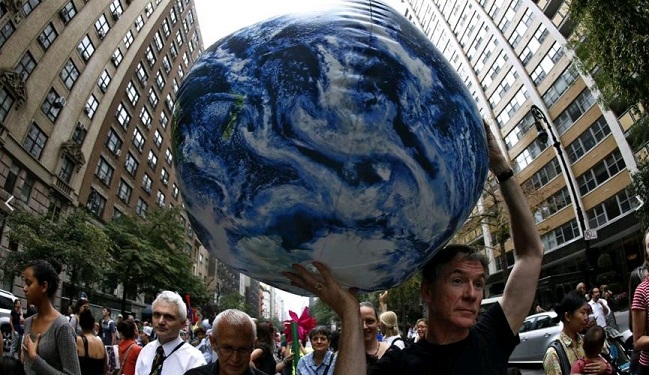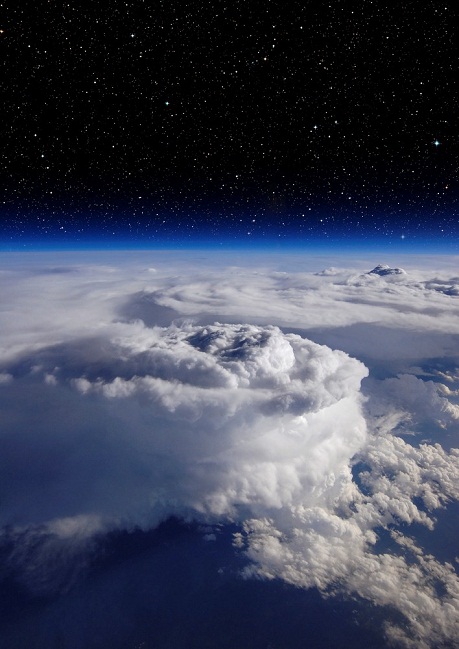08.06.2018
International news review
On world oceans day, 30 UN agencies promised to abandon plastic products

Every year, more than eight million tons of plastic waste is released into the seas and oceans
June 8-world ocean day. In his message on this occasion, UN Secretary-General Antonio Guterres recalled the problem of marine pollution and called for intensified efforts to save the seas and oceans from plastic. His appeal was also heeded by UN agencies.
"Thanks to the oceans, our blue planet is unique in the entire Solar system, and not only visually. They help to regulate the global climate and are the primary source of water that supports all life on Earth: from coral reefs to snow - capped mountains, from tropical rainforests to mighty rivers and even deserts," - said in a message of the UN head.
António Guterres warned today that due to climate change, pollution and unsustainable use of the oceans was under threat, He stressed that 80 percent of ocean pollution is due to waste, falling back from the land. Every year in the seas and oceans is about 8 million tons of plastic. This waste kills turtles and birds, whales and dolphins. Together with the fish they get to our tables. The head of the UN warned that if you do not take decisive measures, then soon the plastic in the ocean will be more than living resources.
The Secretary General urged to prevent this tragedy and strongly recommended to reduce the extent of pollution of the marine environment. He said that more than 30 UN agencies promised to abandon the use of disposable plastic products.
Local residents in Kenya are involved in cleaning the coastal zone

"Today, as in any day, you can change the situation for the better by doing a simple act: for example, take your own water bottle, your Cup for coffee, your plastic bags for purchases; hand over plastic products for recycling; refuse products containing microparticles of plastics; take part in cleaning the coastal zone," the head of the UN addressed to all the inhabitants of the planet.
UN creates a coalition on climate change

The world health organization (who), the United Nations environment Programme (UNEP) and the world meteorological organization (WMO) have announced the creation of a global coalition on health, environment and climate change, the website of the United Nations framework Convention on climate change reports.
In 2017, the global average annual CO2 concentration exceeded 400 ppm and the average temperature was 1.1°C above pre-industrial levels. Climate change is affecting the economies of developing countries, and the cost of recovery from natural disasters, in particular tropical cyclones, reached a new record last year, according to WMO Secretary-General petteri Taalas. The head of WMO stressed that the world has 30 years to reduce its carbon footprint, reduce greenhouse gas emissions and switch to renewable energy.
Who estimates that 7 million people die prematurely each year from air pollution-related diseases, including strokes and heart disease, respiratory diseases and cancer. Air pollution in most major cities exceeds who air quality standards. Many pollutants that are harmful to health contribute to climate change. Reducing emissions from sources such as transport, cooking equipment, agriculture and industry could help reduce global warming by about 0.5°C by 2050.
The new global coalition will seek to pool expertise and improve coordination. Within the framework of the Association, WMO, who and UNEP are going to strengthen work aimed at protecting health from the risks associated with the negative impact of the environment and climate change. In particular, it is planned to organize more efficient climate services, for example, with the help of seasonal forecasts. They can be used to prepare for climate-related diseases such as cholera and malaria, or to warn of the health dangers of extreme heat.
First of all, the coalition will pay attention to air quality. The Association is going to use the WMO observing network, its sand and dust storm warning Advisory and assessment system (SDS-WAS) and the global atmosphere service.
Tropical cyclones slowed down speed

Hurricanes in the Atlantic and the Pacific have become noticeably more dangerous to humans and nature in recent years due to the fact that global warming has dramatically reduced the speed of their movement, according to the journal Nature.
"The main conclusion of our work is that the speed of movement of tropical cyclones over water and land decreased by 20% in the Atlantic, 30% in the North-West Pacific and 19% off the coast of Australia. As a result, rainfall has increased and floods have become more extreme. All this is deadly for people, " said James Kossin (James Kossin) from the NOAA weather and climate Center in Madison (USA).
Over the past two years, the shores of North America have been constantly "bombarded" by powerful hurricanes, causing enormous economic damage to coastal cities and villages in America and causing great problems for populations of some rare animals, such as monarch butterflies. Only in August and September last year in the Atlantic there were just four powerful hurricanes of the fourth and fifth categories of danger, Harvey, Irma, Jose and Maria, who left the island of Puerto Rico without electricity and created a potentially catastrophic situation on the Atlantic coast of the United States and Mexico.
Kossin found out why tropical hurricanes and associated floods have become so destructive in recent years, analyzing how global warming and related phenomena, including rising air and water surface temperatures, have affected the behavior of typical Atlantic and Pacific cyclones.Studying the hurricanes that raged in the waters of the two oceans from 1949 to 2016, the scientist noticed that the speed of their movement gradually fell as the movement from the past to the present, generally decreasing by about 10% across the Earth.
After analyzing the changes in the character of the movement of the winds and the storms in each of the regions, the climate scientist concluded that this occurred through the "fault" of global warming.His calculations show that the increase in water and air temperature has led to the fact that the wind, "conducting" migrations of hurricanes, noticeably weakened and began to move at a slower speed than before. Together with them, the cyclones themselves slowed down. As the climatologist explains, a decrease in the speed of the hurricane even by 10% leads to catastrophic consequences – the typical level of precipitation doubles, and the probability of occurrence of floods increases by several orders of magnitude.
In addition, the decrease in the speed of the cyclone causes another dangerous phenomenon-due to the weakening of the "conducting" winds, the hurricane often changes the direction of "flight" and periodically returns back, which causes another series of destruction in the already flooded regions. Something similar, as Kossin notes, happened in Texas with hurricane Harvey. In the future, according To kossin's forecasts, the situation will be even more difficult.
Now the average annual temperature on Earth is only 0.5 degrees higher than in the middle of the last century, while by the end of this century they can grow by 1.5-3 degrees. As a result, hurricanes will become even slower and longer-lived, making them even more destructive than they have become in recent years.















